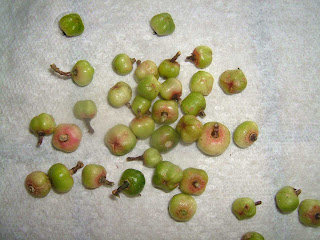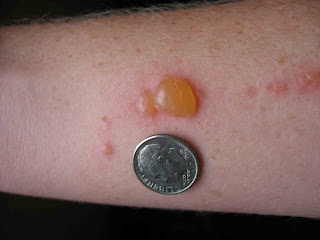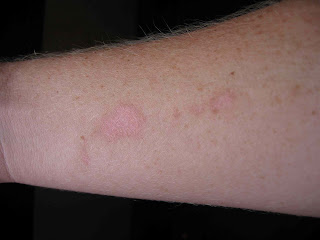I am a 23-year old woman with Type 1 skin who was gathering the fragrant mokihana berries in Kokee, Kauai’s mountain park. Twenty-four hours later, I developed a rash of red marks on my arms, half of which later developed into vesiculo-bullous eruptions. The bullae were left alone; the large blister on the forearm was accidentally burst; the remaining smaller eruptions eventually collapsed over a week’s period.
Pelea anisata, (common name: mokihana) is native only to Kauai, Hawaii, growing at elevations of 1,200 to 4,000 feet. The berries are used in lei-making. It is a multi-trunked tree that grows somewhat vine-like. The oils from its leaves and berries have an anise-like aroma and contain furocoumarin which is the cause of the phytophotodermatitis.
Mokihana is found in the mountain areas of Kauai

The berries are prised for their anise-like fragrance.

My Mokihana Dermatitis at day 5

One month later

Reference:
Elpern DJ, Mitchell JC. Phytophotodermatitis from mokihana fruits (Pelea anisata H. Mann, fam. Rutaceae) in Hawaiian lei. Contact Dermatitis. 1984 Apr;10(4):224-6.
Abstract: Bullous dermatitis, which resolved leaving hyperpigmentation and which was clinically consistent with phytophotodermatitis , affected the skin of the neck of 2 individuals who wore Hawaiian leis (as neck garlands ) made of the fruits of Pelea anisata . In a Daniels culture plate system portions of the fruits showed phototoxicity.















0 comments:
Post a Comment